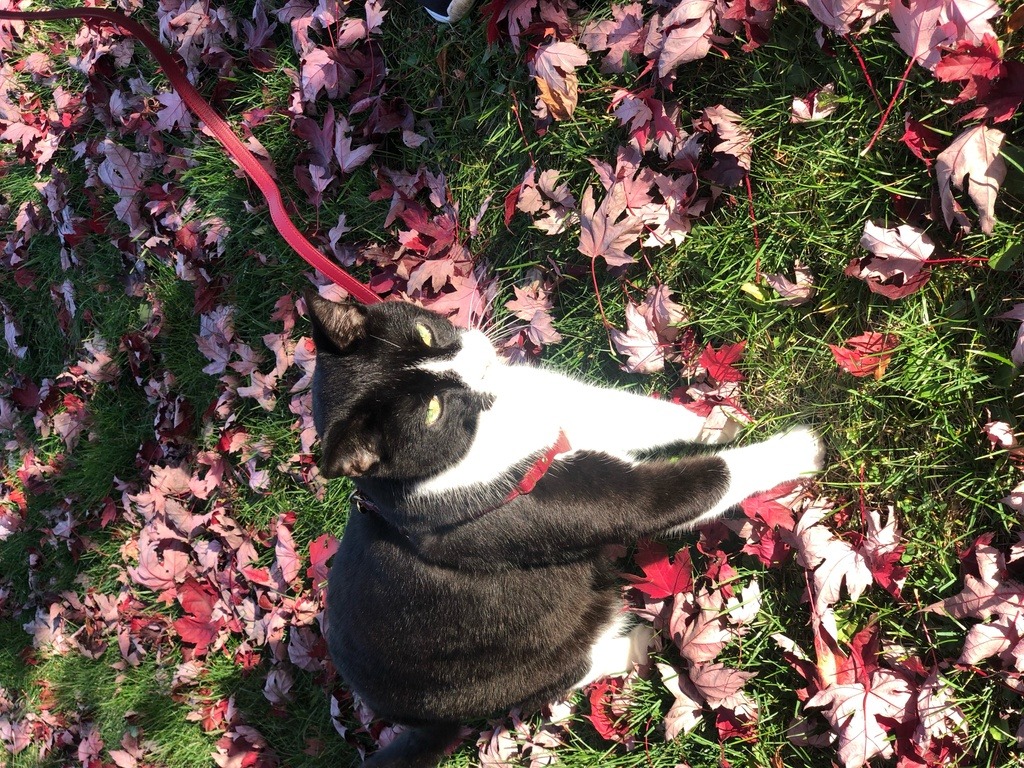Our lovely Sugar who passed away in January is pictured here enjoying a mid-fall day.
This harness and leash and outdoor time from a few years ago is something that I think could be referred to as a project.
What is the first thing that comes to your mind when you think of a project?
When I think of projects, the first things that come to mind are the science fairs of my childhood. I also have a memory of making a dinosaur diorama in Grade One. It was back in the era of the brontosaurus. Does anyone else remember learning about the brontosaurus? It turns out it wasn’t actually a dinosaur. 😊 My understanding is that paleontologists found parts of a diplodocus and parts of a brachiosaurus and thought the two went together to make an entirely different kind of dinosaur but it was later figured out. Anyway, the point is that I still remember my emerald green plastic dinosaur that stood in the middle of the shoebox I’d painted and the construction paper plant-life I’d fastened in. The green “brontosaurus” was memorable but I don’t remember anything more really about the learning. It was assigned to all the grade ones – just something that we did and it was fun enough.
In senior grades we would have opportunities to dress up as a historical character we’d done a project about and present it for a local TV station. In my senior high school sociology class we got deeply into group work, researching and presenting on a particular topic. We were able to choose from a wide range of subjects, most of them interesting to me.
But observing self-directed projects is a whole other experience.
Our tendency might be to think of a project as something on bristol board with stencil letters and a focus on both content and presentation to be evaluated. Maybe there’s drawing, acting or a video involved.
But a project doesn’t have to look like that at all. When it’s driven from a place of need or interest rather than predominantly presentation, the usefulness, richness and depth are what end up shining through.
The ability for one of our cats, Sugar, to have regular times outside was the outcome of a project over the course of several months.
Sugar was a well-loved but very tricky cat. Trips to the vet required strategy on the part of everyone. A full night’s sleep with him around wasn’t always going to happen as he ran back and forth across the piano; once we began covering it, it just led to restlessness. He tended to be rather hard on furniture, doors, rugs – you name it really. It wasn’t realistic to have plants or flowers within any kind of reach or that he was aware of at all. The Christmas tree came down over and over again even once he was 12 or 13 years old. He was very agressive with his sister cat. And still … he was a wonderful, loving, fascinating feline. But unsettled. He was often unsettled. We have said he had two modes – intense and adrenaline-filled and then completely melting in your lap, dreaming and purring away.
Sugar desperately wanted to be outside but multiple “incidents” with neighbours, cars and other cats showed us that this was not easily possible. The final straw was an incident where, after two nights in a 45 foot tree in our backyard, with shrieking squirrels upset that he had positioned himself in their nest, I was escorted in a semi-open bucket by a skyjack operator as high as the machine’s arm would go. We still couldn’t quite reach him on the high branch without climbing and working together to pry him out of the squirrels’ nest, my family and many neighbours gathered below. 🙄
That was it for me. There would be no more outdoor opportunities for Sugar under any circumstances – leashes, fenced areas or times with us being “right there.” No. After spending the night talking to him through the window while his sister paced at the sound of his scared meows, chasing away raccoons from going up the tree and then this dramatic arrangement and rescue with a skyjack, I was having none of it!
Sugar also loved indoor life, comfort and cuddles. I told myself he’d be fine. And other than daily attempts at escape when the door opened, he was in many ways. We created spots for him on window ledges and other than some damage to screens, he did okay.
But ever so slowly, over a number of years, people started trying little bits of outside time with him. My husband would carry him very securely outside and just hold him in the air for a few minutes and we would see how renewed he seemed even from being carried around in the fresh air.
What does any of this have to do with self-directed projects? Well, after many years of indoor life, L decided to try again. She did a deep dive into research about cat behaviour, temperament and psychology, read a lot about indoor cats, outdoor cats and cats in the middle. She created safe sensory spaces in the house with forts made of knitted quilts to set up for him when he was worked up and he loved them. She would very consistently begin her day with a few games and toys with him. She began to research harness and leash training. She researched harness brands, read reviews and made a careful leash and harness purchase. Then began a gradual process of orientation to the harness from how to get it on successfully and comfortably, to how the time was spent outside and how to transition back in. (Perhaps you can see why just deciding he’d be an indoor cat seemed easiest to me). Finally, she wrote to the company with her compliments and also left reviews.
And over time it worked! Mostly. She still couldn’t take him out entirely alone as he became somewhat aggressive when it was time to come in or if he was being stopped from going into brambles or up the tree so she brought in reinforcements in the form of other family members BUT it was largely successful and he was able to have many backyard moments alongside Maple, his sister, as she sunned herself on her back in the grass, leashless.
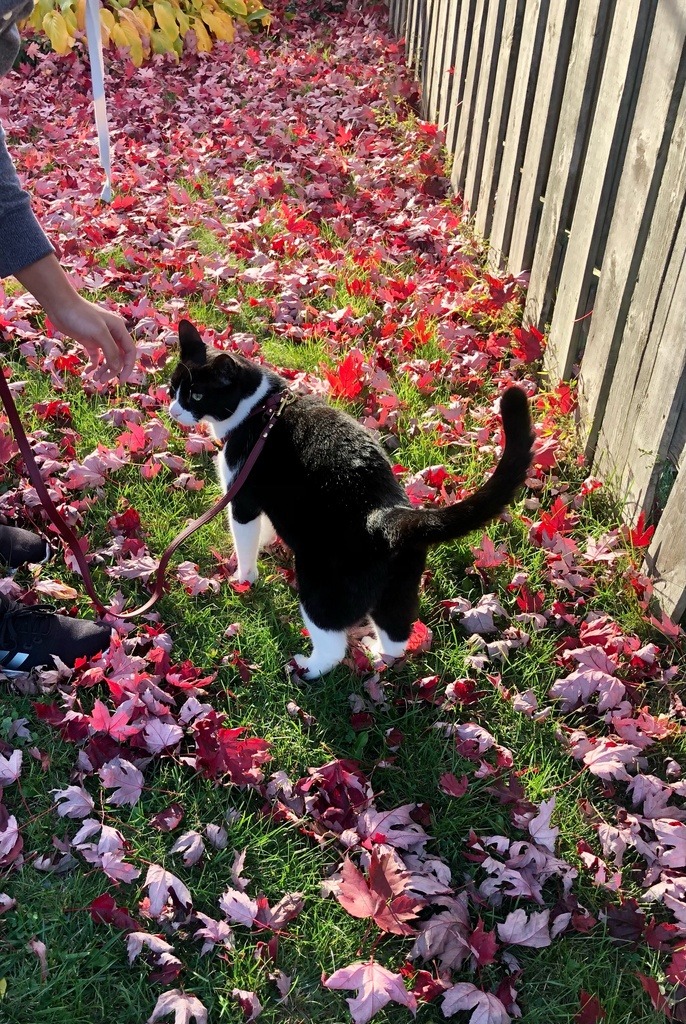
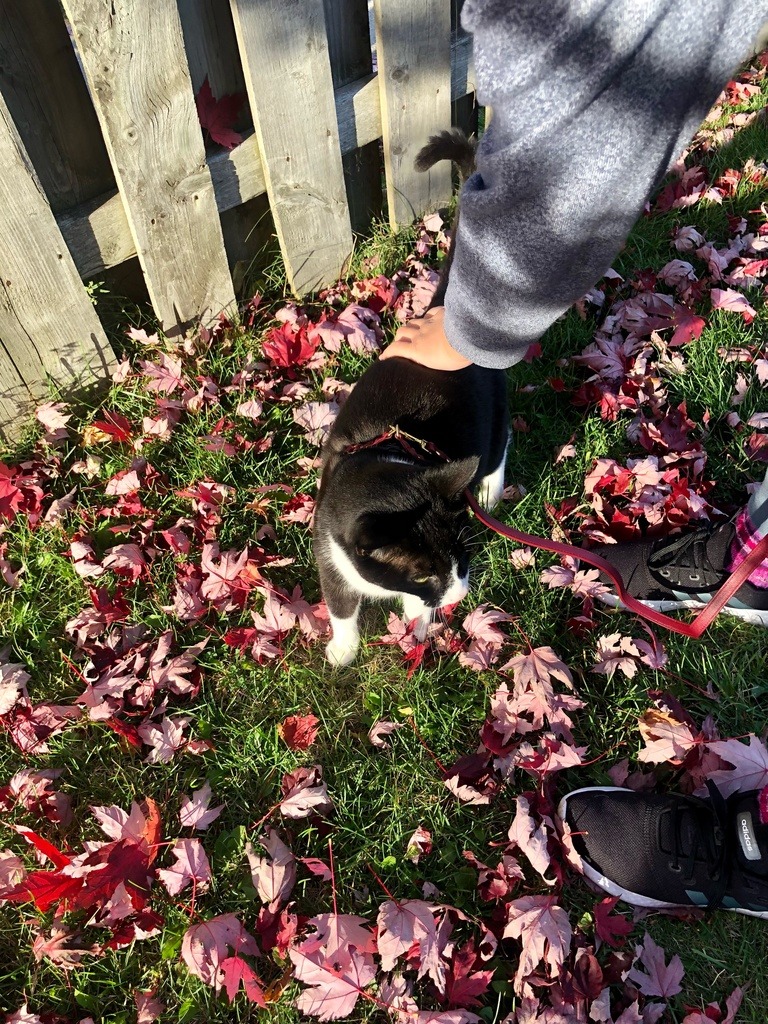
Dictionary.com defines a project as “an individual or collaborative enterprise that is carefully planned to achieve a particular aim.” I would say this qualifies as a project, wouldn’t you?
Yet when I look up “project-based learning,” well-known enough on the internet to be called PBL, some of the information relates (understandably) much more to a classroom setting.
“When was the last time you worked on something so engaging that you lost track of time? When did you last get so engrossed in working on something so important that you stayed focused for a lot longer than normal? When that moment occurred, you were probably in “flow state,” a state of heightened focus and immersion described by Mihaly Csikszentmihalyi that many people don’t get to experience often enough. However, we can foster this flow state in our classrooms by planning PBL units in which students work on meaningful, authentic projects.” ~ What is Effective and Engaging Project-Based Learning, www.amybaeder.com.
The Project-Based Learning Network has an encouraging and clearly stated purpose:
“We help educators plan and implement high-performance project-based learning.
WHY?
To Promote:
Deeper Learning
Student Engagement
Equitable Instruction
Increased Motivation”
I love that different ways of learning and planning are happening for students and know there are many innovative and creative people involved in the process.
At the same time, do you see the difference between a project that’s planned and supported in a “learning environment” versus a purely natural, self-directed one? In a project such as the cat harness purchase and training, there is deeper learning but we don’t need to worry about student engagement because it’s simply a person involved in either pursuing an interest, solving a problem or both. “Promoting increased motivation” is just not something that is very often relevant in self-directed learning. I would say L’s motivation for this was higher than for some other things, but the measuring of whether it’s increased is irrelevant because it’s not being externally measured. One of the most interesting things about people who are very accustomed to self-directing their learning is that they often wouldn’t see their learning as being anything of note. This was just something L did to try to help her cat pursue his longing for some grass under his feet – she would never define it as a “project.” It’s only because we’ve schoolified and standardized learning so much in our culture that it makes sense to me to shine some light on a different way of viewing it.
Lori Pickert, the author of Project-Based Homeschooling: Mentoring Self-Directed Learners has been able to create some really helpful distinctions from the more mainstream concept of PBL which often refers to it as a teaching method. In a homeschool environment, either individually or as part of a group time, there can be the time and space for both children and adults to be free of external standards and evaluation in a way that neither “students” and “teachers” can realistically be, and to really dive deeply. The way they learn doesn’t need to be compartmentalized as an approach measured against conventional outcomes to see whether it’s effective enough to keep implementing. Adults then have the freedom to take on more of a mentoring or supportive role.
My daughter was 15 when she began this harness process so “support” or “mentoring” from me really just looked like being encouraging. For a child, it might have involved more conversation, planning together and financial and practical support in ordering or writing reviews and letters of thanks.
People sometimes ask after hearing about project-based homeschooling, whether it’s unschooling. To that I would say that it depends on whether you’re unschooling. ☺️ I think if you consider your way of living to be unschooling then you can take the pieces that are relevant to you and use what’s helpful. I think you can unschool and have a very project-based life. Maybe you want to declare it so to your family and actively discuss it or maybe you want to keep the nuggets and ideas in the back of your mind as your family goes about daily life. Or maybe neither. I didn’t do either – I didn’t tend to conceptualize what my kids did as projects even though I could have if I’d needed to keep homeschool records, but I still gleaned interesting thoughts from project-based homeschool websites and Lori Pickert’s book. Maybe it begs the question at times that not all families fall into a clear home education lane. I think having a project-based approach could work well within a variety of homeschool styles.
To clarify, we weren’t project-based homeschoolers in any specific way. I’m just reflecting back and thought I’d highlight an example of self-directed learning that could be seen as a project in the context of everyday life.
I also think that kids who go to school do self-directed projects in all sorts of ways in their off-hours time. I used to write books of poems and stories as a kid – nothing to do with school or being evaluated or anything like that. I do think that the more time and space kids have to self-direct or collaborate naturally, the stronger and clearer they become with it – but many families can find ways to still leave lots of margin and to even see what might come up in school that leads to furthering that interest. The books of poems and stories I mentioned above were inspired by my Grade 4 teacher but I continued in my own way for years.
For thoughts about the concept of “flow” from a natural learning perspective, our Virtual Table Podcast Episode #6: The State of Flow in Learning offers quite a deep and nuanced conversation.
Thoughts about self-directed learning? Or projects?
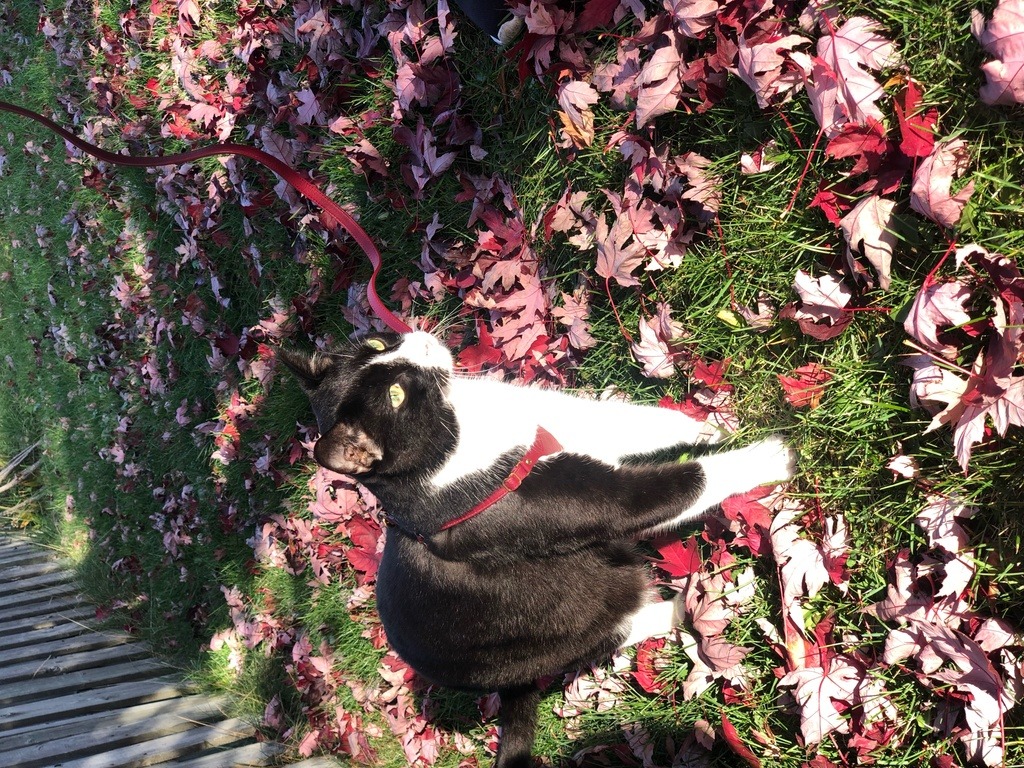
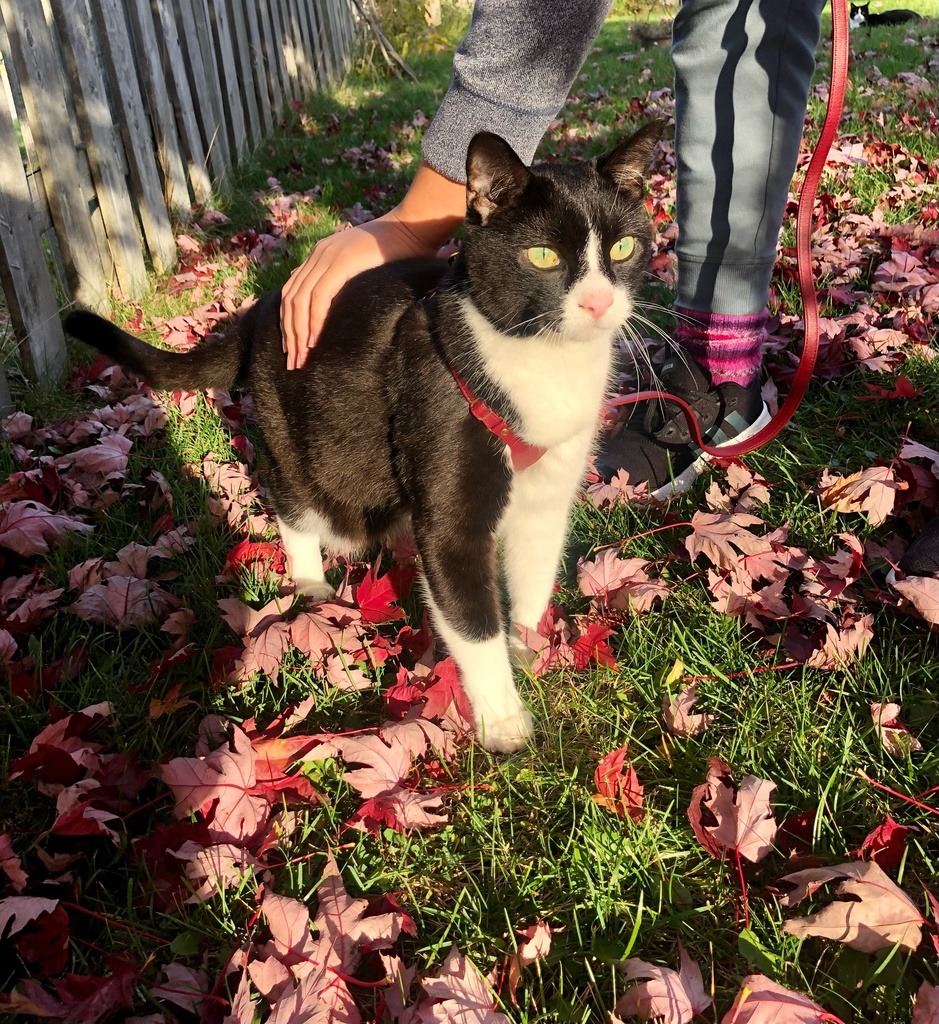
Enjoy this post? Please share.

